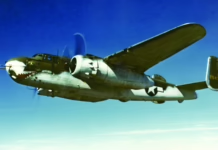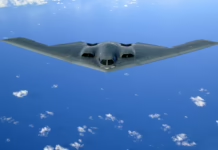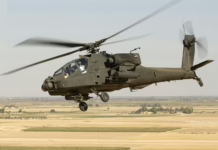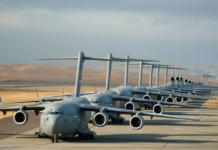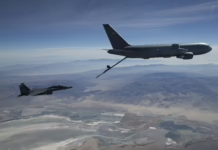From Texas to Tokyo, 3,000 stealth fighters are weaving an unprecedented defense alliance—but software delays and technological dependence reveal the fragile foundation of coalition air power.
Twenty-five nations are building the most extensive multinational fighter program in aviation history, deploying approximately 3,000 F-35 Lightning II aircraft across three specialized variants in an interconnected stealth ecosystem that is fundamentally redefining coalition warfare. Since the Joint Strike Fighter program began in 2001, what started as the largest defense project in U.S. history has evolved into a complex web of shared production, maintenance infrastructure, and operational doctrine that binds partner nations together through technological dependencies extending from software updates to intelligence-sharing architectures.
The United States controls nearly two-thirds of the planned global fleet, but the remaining aircraft—distributed among partners including Japan, the United Kingdom, Australia, and Italy—represent a strategic bet on interoperability over national autonomy. With final assembly lines operating in Fort Worth, Texas, Cameri, Italy, and Nagoya, Japan, the program has created a transnational production system that manufactures not just aircraft but alliance cohesion itself.
“The future is built not by limiting ourselves to defense, but by making defense a social, economic, and technological innovation engine,” Italian Defense Minister Guido Crosetto declared at a ceremony in Sardinia on July 2, 2025, announcing Italy’s plan to establish the first F-35 pilot training facility outside the United States in Sicily.
Three Variants, One Airframe Philosophy
The F-35 family addresses three distinct operational requirements while maintaining commonality that simplifies logistics and training across the alliance. The F-35A conventional takeoff and landing variant serves as the backbone for most air forces, with the U.S. Air Force planning to acquire 1,763 examples to replace the F-16C/D Fighting Falcon. The F-35B short takeoff/vertical landing variant enables operations from small carriers and austere forward bases, with 353 planned for the U.S. Marine Corps and 138 for the United Kingdom’s Royal Air Force and Royal Navy. The F-35C carrier variant features larger wings and reinforced landing gear for catapult launches and arrested recoveries aboard large-deck carriers, with 340 ordered by the U.S. Navy.
All three variants share a common Pratt & Whitney F135 engine core, though the F-35B incorporates a unique lift fan system for vertical operations. The F-35B’s F135-PW-600 engine produces 38,000 pounds of thrust in conventional flight—expanding to 40,500 pounds during vertical operations—compared to 43,000 pounds for the F-35A’s F135-PW-100 and the F-35C’s identical powerplant. This commonality extends throughout the aircraft: the F-35A and F-35B share a 35-foot wingspan, while the F-35C’s carrier-optimized design stretches to 43 feet for enhanced low-speed handling.
Performance parameters remain largely consistent across the family. All variants achieve speeds of Mach 1.6 and operate above 50,000 feet, with ranges exceeding 1,350 miles on internal fuel—unlimited with aerial refueling. The F-35A and F-35C carry 18,000-pound payloads, while the F-35B’s vertical-lift requirements reduce its capacity to 15,000 pounds. Maximum takeoff weight falls in the 70,000-pound class for all three configurations.
America’s Numerical Dominance
The U.S. military services represent the program’s foundation, with 2,456 aircraft planned across all three variants. This massive commitment reflects the ambition to replace three very different Cold War workhorses—the F-16C/D, F/A-18C/D Hornet, and AV-8B Harrier—with a common airframe family featuring tailored systems and performance for each service. The Air Force’s 1,763 F-35As will form the core of future tactical airpower, while the Navy’s 340 F-35Cs will provide carrier strike capability and the Marine Corps’ 353 F-35Bs will deliver expeditionary firepower from amphibious assault ships and forward operating bases.
Yet this dominance brings responsibility and risk. The Pentagon faces mounting challenges with the Technology Refresh 4 update, part of the larger Block 4 modernization effort. Originally scheduled for completion around 2026, Block 4 has been pushed to at least 2031—five years behind schedule and at least $6 billion over budget compared to initial estimates. The TR3 prerequisite hardware and software upgrade has suffered from stability issues, technical setbacks, and production delays that have disrupted aircraft deliveries across the global fleet.
The Government Accountability Office has criticized the use of incentive fees for contractors, noting that Lockheed Martin and engine manufacturer Pratt & Whitney received bonuses despite late deliveries. In response, the Pentagon reduced Block 4’s scope from 66 planned capabilities to 31, focusing on delivering a smaller number of upgrades at a more predictable pace. Some of the most advanced planned capabilities depend on a new engine core upgrade for the F135, which has been deferred to 2033.
Japan’s Strategic Imperative
Tokyo has emerged as the second-largest F-35 operator outside the United States, ordering 147 total airframes comprising 105 F-35As and 42 F-35Bs. Japan’s adoption of the Lightning II reflects both geopolitical urgency and technological ambitions driven by China’s development of new stealth fighters and increasingly frequent violations of Japanese air defense identification zones.
The F-35’s dual function as an intelligence node and interceptor makes it particularly valuable against an increasingly well-armed and assertive Chinese Air Force and Navy. Japan Air Self-Defense Force squadrons now operate from Misawa and Hyakuri air bases, with F-35B operations beginning at Nyutabaru Air Base on Kyushu in early August 2025. The Maritime Self-Defense Force received its first three F-35B models at Nyutabaru, with plans to operate the vertical-takeoff variant from two modified Izumo-class destroyer carriers: JS Izumo (DDH-183) and JS Kaga (DDH-184).
Japan’s participation extends beyond aircraft acquisition to final assembly, with Mitsubishi Heavy Industries and Lockheed Martin operating a production line at Nagoya that builds Japanese airframes and conducts regional maintenance. This industrial partnership strengthens Japan’s aerospace sector while creating regional sustainment capacity that reduces dependence on trans-Pacific logistics chains.
In early 2025, the JASDF joined the Royal Australian Air Force and U.S. Air Force for Exercise Bushido Guardian 25, deploying F-35s in one of the largest multilateral drills involving the type. Approximately 350 USAF airmen participated alongside 300 JASDF personnel and 100 RAAF members.
“We are excited to take to the sky with aircraft from Japan and the United States, sharing experience and strengthening aviator-to-aviator relationships between our nations,” said RAAF Wing Commander Mark Biele, commanding officer of No. 3 Squadron.
Britain’s Carrier Strike Bet
The United Kingdom has committed to 138 F-35Bs to equip both Royal Air Force squadrons and Royal Navy carrier air wings, while negotiations continue regarding potential F-35A acquisitions to replace retiring Eurofighter Typhoons. For the RAF and Royal Navy, these aircraft fulfill three functions: bolstering multi-domain operations for combined forces, providing carrier strike capability, and strengthening U.S.-UK interoperability.
The F-35B enables operations from the Royal Navy’s two new Queen Elizabeth-class carriers, with 617 Squadron “The Dambusters” at RAF Marham and 809 Naval Air Squadron forming the initial operational units. BAE Systems plays a crucial role in the global supply chain, manufacturing 15 percent of every F-35 airframe—including the aft fuselage—and operating a maintenance facility at RAF Marham that serves both British and European fleets. The Lightning also functions as a technology demonstrator for the Tempest future combat air system, a planned sixth-generation fighter being developed through European partnership.
Recent operational deployments have highlighted both capabilities and challenges. One F-35B made an emergency landing in southern India due to weather preventing its return to HMS Prince of Wales, then remained stranded until July 2025 due to auxiliary power unit issues. Similarly, another F-35B conducted an emergency landing at Kagoshima, Japan, in early August 2025 and has been unable to depart from the civilian airfield since.
Australia’s Indo-Pacific Focus
The Royal Australian Air Force ordered 100 F-35As to enable what Australia describes as self-reliant defense within an alliance framework. Canberra values the Lightning II’s long-range intelligence, surveillance, and reconnaissance capability over the Indo-Pacific’s vast maritime expanse. The aircraft’s stealth and sensor fusion, combined with secure data links, integrates with RAAF Wedgetail airborne early warning and control platforms for enhanced battlespace management. The jets will also operate alongside the upcoming Ghost Bat loyal-wingman unmanned combat aerial vehicles.
Australia deployed eight F-35As from No. 3 Squadron to Exercise Bushido Guardian 25, supported by a KC-30A Multi-Role Tanker Transport from No. 33 Squadron. The deployment to Japan marked one of the largest forward operations of the type in RAAF history. The procurement followed extensive industrial negotiation and strategic planning to prevent a capability gap as the legacy F/A-18 Hornet and F-111C strike bomber aged out of service. Australia’s ANZUS treaty obligations with the United States and the nation’s vast geography shaped acquisition priorities toward the conventional F-35A variant rather than the carrier-capable or vertical-takeoff models.
Italy’s European Hub
Italy has positioned itself as a critical node in the European F-35 network despite fielding a smaller force of 90 total aircraft comprising 60 F-35As and 30 F-35Bs. Rome became a partner at the program’s outset, enabling Leonardo and Lockheed Martin to operate Europe’s only final assembly line at Cameri Air Base. The facility builds wings for the global fleet, assembles Italian airframes, and provides maintenance for other European operators, making Italy a significant link in the worldwide supply chain.
The announcement of Sicily’s training center solidifies Italy’s role as a major collaborator in the global F-35 enterprise. The Italian Air Force and Navy jointly procured the Lightning II after 2019 sea trials with a combined Air Force-Navy detachment aboard the carrier Cavour demonstrated that the short-deck carrier could accommodate F-35B operations. Operational squadrons from Amendola and Ghedi air bases have already participated in Baltic Air Policing missions and Red Flag exercises in the United States since the first jets entered service.
Given Italy’s position as a key participant in the current Eurofighter Typhoon production chain, its embrace of the F-35 represents a notable strategic choice that balances European defense cooperation with transatlantic partnership.
The Web of Technological Dependence
The F-35 program creates bonds between partner nations that extend far beyond aircraft deliveries. Software updates, spare parts logistics, maintenance data sharing, and intelligence architectures form an integrated ecosystem where unilateral action becomes increasingly difficult. This interdependence serves American strategic interests by ensuring allies remain committed to shared defense frameworks, but it also creates vulnerabilities when technical problems or policy disputes emerge.
The Block 4 modernization delays affect all partner nations simultaneously, demonstrating how a problem in Fort Worth or with Pratt & Whitney reverberates globally. Nations operating relatively small F-35 fleets lack the leverage to demand priority or alternative solutions, while even major partners like Japan and the United Kingdom must accept the Pentagon’s revised timelines and reduced capability sets.
Yet this shared challenge also builds coalition cohesion. When 25 nations operate variations of the same fighter, they develop common operational concepts, shared training standards, and interoperable communications systems that facilitate joint operations. The secure data links that enable F-35s to share sensor data also create networks of mutual dependence that align national strategies toward common threats.
The rapid proliferation of the F-35 across allied air forces and navies has fundamentally changed the character of 21st-century air power, creating an unprecedented multinational stealth fighter fleet bound together by technological systems that enable cooperation while constraining autonomy. As partners continue expanding their fleets and integrating the aircraft into carrier strike groups, combined task forces, and regional defense networks, the Lightning II program stands as both achievement and obligation—a fighter that unites allies through shared capability and shared vulnerability.

Key Takeaways
- Twenty-five nations are deploying approximately 3,000 F-35 Lightning II aircraft across three variants, creating history’s most extensive multinational fighter program with final assembly lines in Texas, Italy, and Japan.
- The United States plans to acquire 2,456 aircraft (nearly two-thirds of the global fleet), while major partners Japan (147), the UK (138), Australia (100), and Italy (90) form the core of the international consortium.
- Block 4 modernization delays threaten the program’s technological edge, with completion pushed to 2031—five years late and $6 billion over budget—forcing capability reductions from 66 to 31 planned upgrades.
- Technological interdependence binds partners through shared software, maintenance networks, and intelligence architectures, creating both alliance cohesion and strategic vulnerability when technical problems emerge.
- Italy is establishing the first F-35 training center outside the United States in Sicily, solidifying its role as Europe’s sustainment hub alongside its Cameri final assembly line operations.



